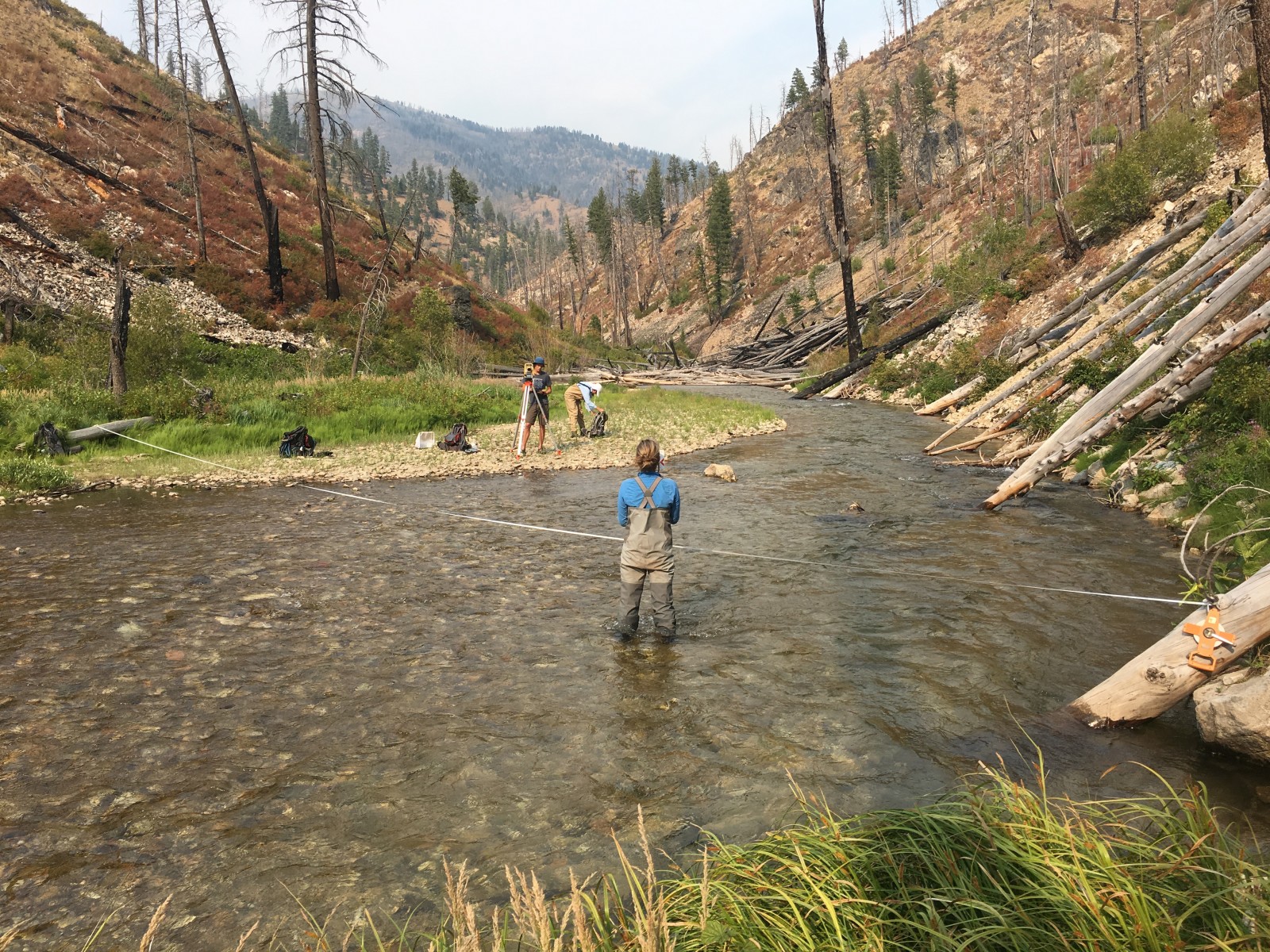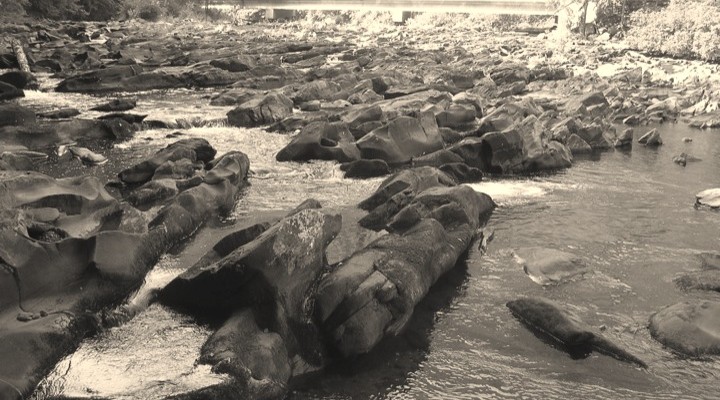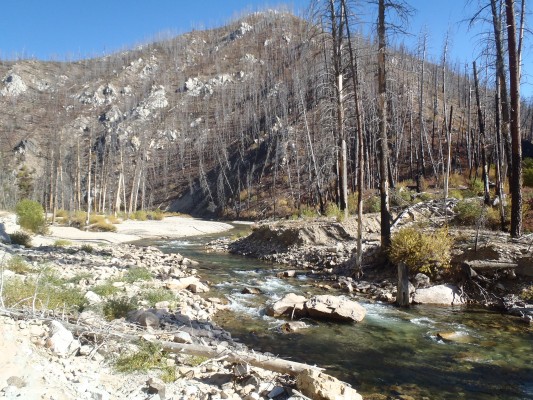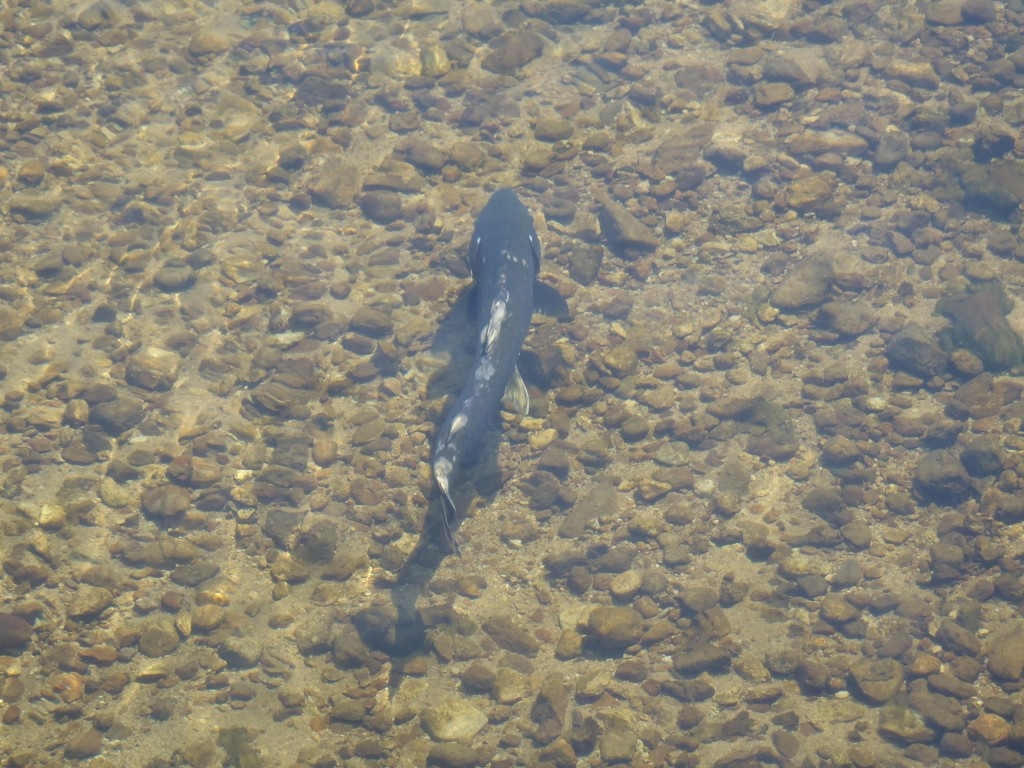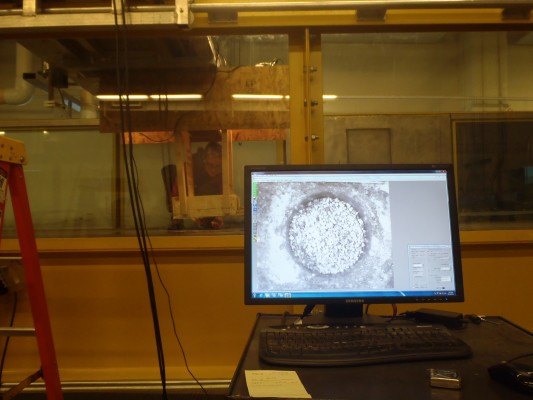This past summer (2016), students at The College of Idaho — Donavan Maude (16′ Biology and Environmental Studies double major) and Natasha Dacic (18′ Math-Physics and Environmental Studies double major) — traveled into the Idaho backcountry to study riverine response to wildfire. Read about their experience on The College of Idaho, News Blog. Off the grid: Yotes research in Idaho backcountry
Read more ›Recent Posts
Geosciences at The College of Idaho
Courses GEO-101 Physical Geology GEO-320 Watershed Hydrology
Read more ›Post-fire debris flows in the Middle Fork of the Boise River
John Buffington and I just returned from an 11 day trip to re-survey a one-mile section of the Middle Fork of the Boise River that experienced three simultaneous debris flow inputs following the Hot Creek Fire in 2003. The photo series below (credit: John Buffington) shows the rapid response of the main stem river at the Steel Creek fan. Our surveys continued on a former postdoc project and sediment transport model developed by Mik Lewiki. I won’t go into too many of those specifics here, but stay tuned for the 2012 repeat photo next week.
Read more ›Middle Fork of the Salmon River, 2012
“Have I ever told you how much I LOVE my job!?” This phrase may be a little over used in my world, but who cares, it’s true. I was able to book end my summer field work with two float trips down the Middle Fork of the Salmon River, and one trip sandwiched in the middle. So it was a hat trick, a trifecta, a tripple crown. Whatever you prefer to call it, it came in threes: three trips down the river, three different seasons, three different flows, three different purposes all rolled into one – science, adventure, fun. (Actually there are more of the later, but three seemed to fit the theme, so I chose the best ones.) Yes, I love my job (it’s actually better to call it my career and my life, but enough bragging). Here are some highlights from the trips: – I flew into Indian Creek to launch […]
Read more ›